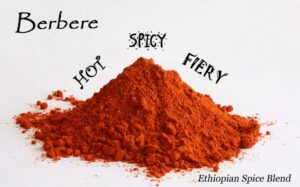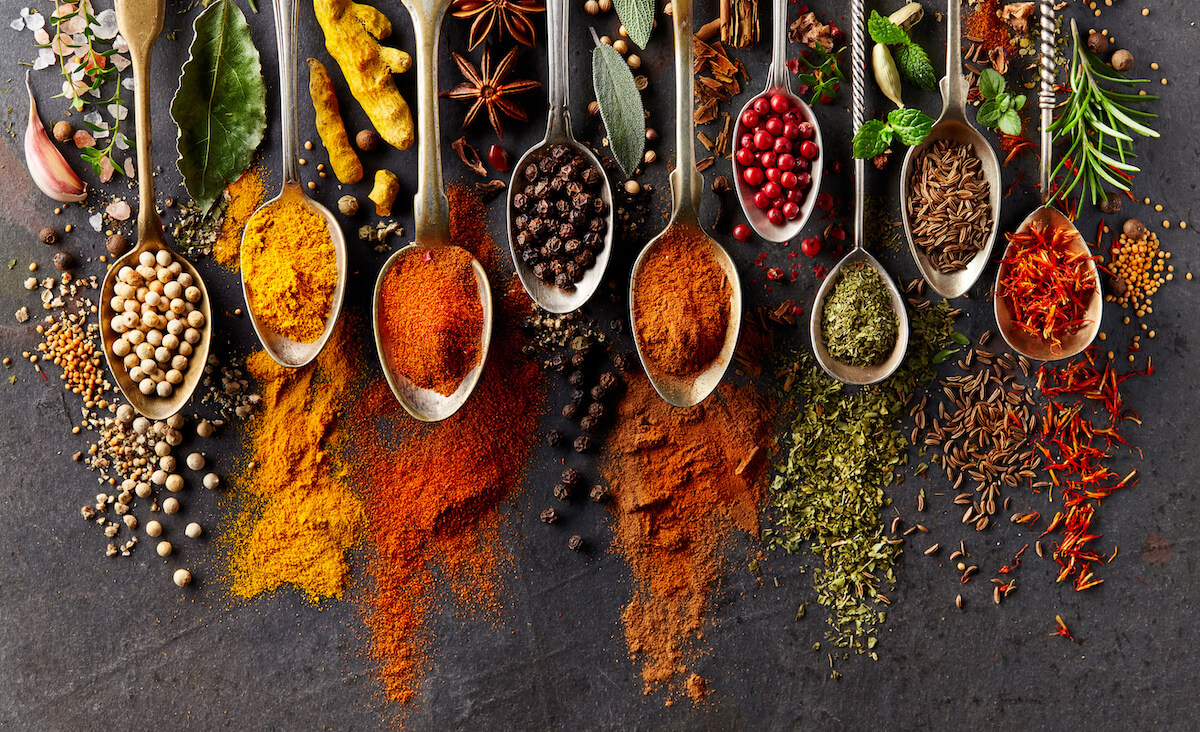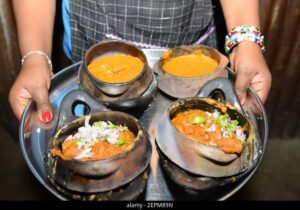Introduction
Ethiopian cuisine is known for its bold flavours and complex spices. The most important spice in Ethiopian cuisine is berbere, a fiery blend of chilli peppers, garlic, ginger, and other spices. Berbere is used to flavour a wide variety of dishes, from stews to salads to meats.
What we know for sure is that Ethiopians owe a lot to foreign cultures that visited the country over the centuries, especially when it comes to spicing up the cuisine.
I’ll return to the story of where Ethiopia got its spices a little later. But first, here’s a look at some of the essential spices – the Amharic word is qemam – used in Ethiopian cooking, along with a quick look at the dishes in which you’ll find them.
And by the way, if you see anything here you’d like to add to your own spice rack, and you don’t live in a town with an Ethiopian market, you can buy unique Ethiopian spice blends – like berbere, mitmita and mekelesha – at many places around the country that do mail order business.

Two of the more well-known retailers are Brundo, in Oakland, Calif., and Workinesh Spice Blends, in St. Paul, Minn. The latter, founded in 1978, was the first company in the U.S. to make and sell Ethiopian spices. But it doesn’t have a website, so you’ll need to call or write for a price list: 952-303-6710, 3451 W. Burnsville Parkway, Suite 102, Burnsville, MN 55337 (ask for Lemlem). In 2012, the company collaborated on the creation of a wall calendar that had an illustrated page of information about Ethiopian spices. And new to the market is Qmem Quality Ethiopian Spices, which imports its products from Ethiopia, packages them for retail sale, and then shares the profits with the women in Ethiopia who made them.
The Ethiopian Spice Rack. Before we take a closer look at the unique spice blends of Ethiopian cuisine, let’s meet the basic ingredients – almost all of them familiar to the American kitchen as well. I’ll give you the Amharic names for some of the most ubiquitous spices along with their English names, as well as a few dishes in which you’ll find them. In some cases, the Ethiopian-grown version is a little different than the kind we get in the U.S. And of course, with the difficulty of transliterating Amharic into English, you’ll find numerous ways in the literature to spell these spices.


